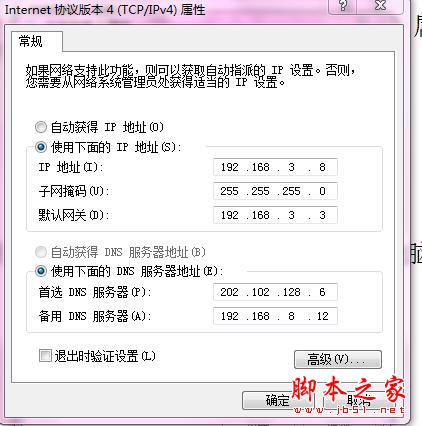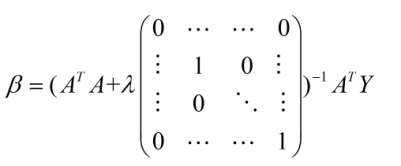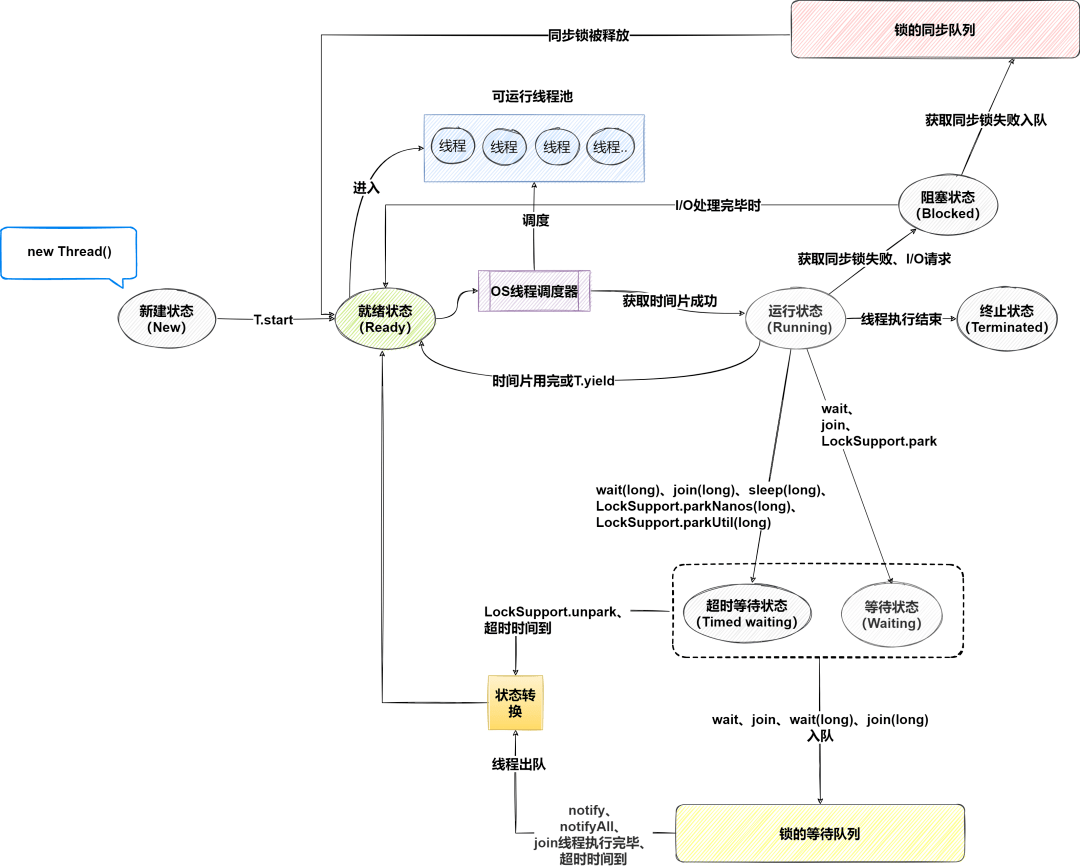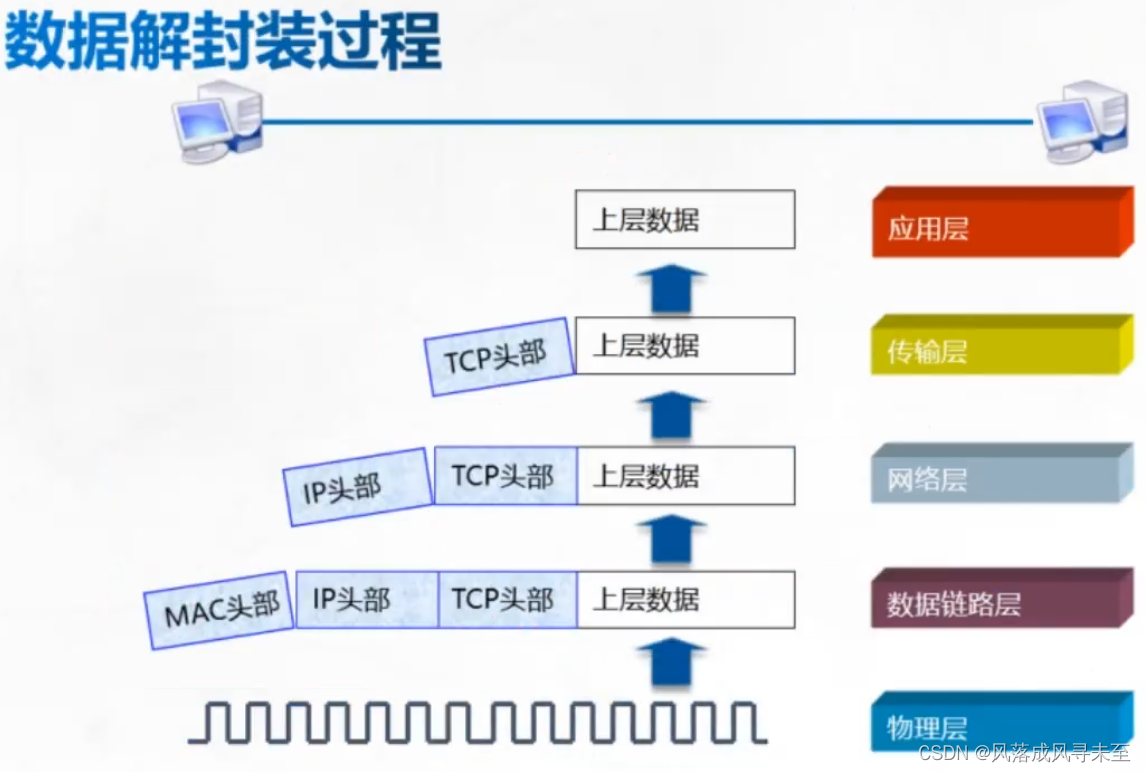日常开发中我们经常使用 Fragment 管理布局,使用起来非常方便,但是在简单的 API 背后隐藏了什么操作,很多人恐怕不了解。
如果你回答不出这些问题,那这篇文章可能就对你有些帮助:
- Fragment FragmentManager FragmentTransaction 的关系和作用
- Fragment 如何实现布局的添加替换
- 嵌套 Fragment 的原理
读完本文你将了解:
文章目录
- Fragment 的使用
- FragmentManager
- 定义的操作
- 内部类/接口:
- 实现类 FragmentManagerImpl
- 事务
- FragmentTransaction
- 事务的四种提交方式
- 事务真正实现/回退栈 BackStackRecord
- 真正处理的部分
- Fragment 是什么
- Fragment 的主要成员
- 生命周期方法
- 总结
- Fragment、FragmentManager、FragmentTransaction 关系
- Fragment 如何实现布局的添加替换
- 嵌套 Fragment 的原理
注意,这里分析的是
support-fragment-25.3.1-source.jar" 的support.v4.app.Fragment及相关类。
Fragment 的使用
Fragment 的使用大家应该都熟悉,这里举个例子,要实现这样的类似饿了么点餐效果:
界面丑了点,但意思是差不多的哈,,左边一个列表,点击后切换右边的布局。我们就可以使用 Fragment 来实现。
实现也很简单,创建一个的布局,然后在 Activity 里点击时替换 Fragment。
mFragmentManager = getSupportFragmentManager();
mFragmentManager.beginTransaction().replace(R.id.fl_content, fragment).commitAllowingStateLoss();
代码很简单,核心就三步:
- 创建 Fragment
- 获取 FragmentManager
- 调用事务,添加、替换
我们一步步来了解这背后的故事。
Fragment 大家应该比较熟悉,放到最后。
先来看看 FragmentManager。
FragmentManager
public abstract class FragmentManager {...}
FragmentManager 是一个抽象类,定义了一些和 Fragment 相关的操作和内部类/接口。
定义的操作
FragmentManager 中定义的方法如下:
//开启一系列对 Fragments 的操作
public abstract FragmentTransaction beginTransaction();//FragmentTransaction.commit() 是异步执行的,如果你想立即执行,可以调用这个方法
public abstract boolean executePendingTransactions();//根据 ID 找到从 XML 解析出来的或者事务中添加的 Fragment
//首先会找添加到 FragmentManager 中的,找不到就去回退栈里找
public abstract Fragment findFragmentById(@IdRes int id);//跟上面的类似,不同的是使用 tag 进行查找
public abstract Fragment findFragmentByTag(String tag);//弹出回退栈中栈顶的 Fragment,异步执行的
public abstract void popBackStack();//立即弹出回退栈中栈顶的,直接执行哦
public abstract boolean popBackStackImmediate();//返回栈顶符合名称的,如果传入的 name 不为空,在栈中间找到了 Fragment,那将弹出这个 Fragment 上面的所有 Fragment
//有点类似启动模式的 singleTask 的感觉
//如果传入的 name 为 null,那就和 popBackStack() 一样了
//异步执行
public abstract void popBackStack(String name, int flags);//同步版的上面
public abstract boolean popBackStackImmediate(String name, int flags);//和使用 name 查找、弹出一样
//不同的是这里的 id 是 FragmentTransaction.commit() 返回的 id
public abstract void popBackStack(int id, int flags);
//你懂得
public abstract boolean popBackStackImmediate(int id, int flags);//获取回退栈中的元素个数
public abstract int getBackStackEntryCount();
//根据索引获取回退栈中的某个元素
public abstract BackStackEntry getBackStackEntryAt(int index);//添加或者移除一个监听器
public abstract void addOnBackStackChangedListener(OnBackStackChangedListener listener);
public abstract void removeOnBackStackChangedListener(OnBackStackChangedListener listener);//还定义了将一个 Fragment 实例作为参数传递
public abstract void putFragment(Bundle bundle, String key, Fragment fragment);
public abstract Fragment getFragment(Bundle bundle, String key);//获取 manager 中所有添加进来的 Fragment
public abstract List<Fragment> getFragments();可以看到,定义的方法有很多是异步执行的,后面看看它究竟是如何实现的异步。
内部类/接口:
- BackStackEntry:Fragment 后退栈中的一个元素
- onBackStackChangedListener:后退栈变动监听器
- FragmentLifecycleCallbacks: FragmentManager 中的 Fragment 生命周期监听
//后退栈中的一个元素
public interface BackStackEntry {//栈中该元素的唯一标识public int getId();//获取 FragmentTransaction#addToBackStack(String) 设置的名称public String getName();@StringRespublic int getBreadCrumbTitleRes();@StringRespublic int getBreadCrumbShortTitleRes();public CharSequence getBreadCrumbTitle();public CharSequence getBreadCrumbShortTitle();
}
可以看到 BackStackEntry 的接口比较简单,关键信息就是 ID 和 Name。
//在 Fragment 回退栈中有变化时回调
public interface OnBackStackChangedListener {public void onBackStackChanged();
}
//FragmentManager 中的 Fragment 生命周期监听public abstract static class FragmentLifecycleCallbacks {public void onFragmentPreAttached(FragmentManager fm, Fragment f, Context context) {}public void onFragmentAttached(FragmentManager fm, Fragment f, Context context) {}public void onFragmentCreated(FragmentManager fm, Fragment f, Bundle savedInstanceState) {}public void onFragmentActivityCreated(FragmentManager fm, Fragment f,Bundle savedInstanceState) {}public void onFragmentViewCreated(FragmentManager fm, Fragment f, View v,Bundle savedInstanceState) {}public void onFragmentStarted(FragmentManager fm, Fragment f) {}public void onFragmentResumed(FragmentManager fm, Fragment f) {}public void onFragmentPaused(FragmentManager fm, Fragment f) {}public void onFragmentStopped(FragmentManager fm, Fragment f) {}public void onFragmentSaveInstanceState(FragmentManager fm, Fragment f, Bundle outState) {}public void onFragmentViewDestroyed(FragmentManager fm, Fragment f) {}public void onFragmentDestroyed(FragmentManager fm, Fragment f) {}public void onFragmentDetached(FragmentManager fm, Fragment f) {}}
}
熟悉 Fragment 生命周期的同学一定觉得很面熟,这个接口就是为我们提供一个 FragmentManager 所有 Fragment 生命周期变化的回调。
小结:
可以看到,FragmentManager 是一个抽象类,它定义了对一个 Activity/Fragment 中 添加进来的 Fragment 列表、Fragment 回退栈的操作、管理。
实现类 FragmentManagerImpl
FragmentManager 定义的任务是由 FragmentManagerImpl 实现的。
主要成员:
final class FragmentManagerImpl extends FragmentManager implements LayoutInflaterFactory {ArrayList<OpGenerator> mPendingActions;Runnable[] mTmpActions;boolean mExecutingActions;ArrayList<Fragment> mActive;ArrayList<Fragment> mAdded;ArrayList<Integer> mAvailIndices;ArrayList<BackStackRecord> mBackStack;ArrayList<Fragment> mCreatedMenus;// Must be accessed while locked.ArrayList<BackStackRecord> mBackStackIndices;ArrayList<Integer> mAvailBackStackIndices;ArrayList<OnBackStackChangedListener> mBackStackChangeListeners;private CopyOnWriteArrayList<Pair<FragmentLifecycleCallbacks, Boolean>> mLifecycleCallbacks;
//...
}
可以看到,FragmentManagerImpl 中定义了 添加的、活跃的。以及回退栈的列表,这和 FragmentManager 的要求一致。
int mCurState = Fragment.INITIALIZING;
FragmentHostCallback mHost;
FragmentContainer mContainer;
Fragment mParent;static Field sAnimationListenerField = null;boolean mNeedMenuInvalidate;
boolean mStateSaved;
boolean mDestroyed;
String mNoTransactionsBecause;
boolean mHavePendingDeferredStart;
接着还有当前的状态,当前 Fragment 的起始 mParent,以及 FragmentManager 的 mHost 和 mContainer。
FragmentContainer 就是一个接口,定义了关于布局的两个方法:
public abstract class FragmentContainer {@Nullablepublic abstract View onFindViewById(@IdRes int id);public abstract boolean onHasView();
}
而 FragmentHostCallback 就复杂一点了,它提供了 Fragment 需要的信息,也定义了 Fragment 宿主应该做的操作:
public abstract class FragmentHostCallback<E> extends FragmentContainer {private final Activity mActivity;final Context mContext;private final Handler mHandler;final int mWindowAnimations;final FragmentManagerImpl mFragmentManager = new FragmentManagerImpl();//...
}
我们知道,一般来说 Fragment 的宿主就两种:
- Activity
- Fragment
比如 FragmentActivity 的内部类 HostCallbacks 就实现了这个抽象类:
class HostCallbacks extends FragmentHostCallback<FragmentActivity> {public HostCallbacks() {super(FragmentActivity.this /*fragmentActivity*/);}//...@Overridepublic LayoutInflater onGetLayoutInflater() {return FragmentActivity.this.getLayoutInflater().cloneInContext(FragmentActivity.this);}@Overridepublic FragmentActivity onGetHost() {return FragmentActivity.this;}@Overridepublic void onStartActivityFromFragment(Fragment fragment, Intent intent, int requestCode) {FragmentActivity.this.startActivityFromFragment(fragment, intent, requestCode);}@Overridepublic void onStartActivityFromFragment(Fragment fragment, Intent intent, int requestCode, @Nullable Bundle options) {FragmentActivity.this.startActivityFromFragment(fragment, intent, requestCode, options);}@Overridepublic void onRequestPermissionsFromFragment(@NonNull Fragment fragment,@NonNull String[] permissions, int requestCode) {FragmentActivity.this.requestPermissionsFromFragment(fragment, permissions,requestCode);}@Overridepublic boolean onShouldShowRequestPermissionRationale(@NonNull String permission) {return ActivityCompat.shouldShowRequestPermissionRationale(FragmentActivity.this, permission);}@Overridepublic boolean onHasWindowAnimations() {return getWindow() != null;}@Overridepublic void onAttachFragment(Fragment fragment) {FragmentActivity.this.onAttachFragment(fragment);}@Nullable@Overridepublic View onFindViewById(int id) {return FragmentActivity.this.findViewById(id);}@Overridepublic boolean onHasView() {final Window w = getWindow();return (w != null && w.peekDecorView() != null);}
}
我们再看看他对 FragmentManager 定义的关键方法是如何实现的。
@Override
public FragmentTransaction beginTransaction() {return new BackStackRecord(this);
}
beginTransaction() 返回一个新的 BackStackRecord ,我们后面介绍。
前面提到了,popBackStack() 是一个异步操作,它是如何实现异步的呢?
@Override
public void popBackStack() {enqueueAction(new PopBackStackState(null, -1, 0), false);
}
public void enqueueAction(OpGenerator action, boolean allowStateLoss) {if (!allowStateLoss) {checkStateLoss();}synchronized (this) {if (mDestroyed || mHost == null) {throw new IllegalStateException("Activity has been destroyed");}if (mPendingActions == null) {mPendingActions = new ArrayList<>();}mPendingActions.add(action);scheduleCommit();}
}
private void scheduleCommit() {synchronized (this) {boolean postponeReady =mPostponedTransactions != null && !mPostponedTransactions.isEmpty();boolean pendingReady = mPendingActions != null && mPendingActions.size() == 1;if (postponeReady || pendingReady) {mHost.getHandler().removeCallbacks(mExecCommit);mHost.getHandler().post(mExecCommit);}}
}
可以看到,调用到最后,是调用宿主中的 Handler 来发送任务的,so easy 嘛。其他的异步执行也是类似,就不赘述了。
后退栈相关方法:
ArrayList<BackStackRecord> mBackStack;
@Override
public int getBackStackEntryCount() {return mBackStack != null ? mBackStack.size() : 0;
}@Override
public BackStackEntry getBackStackEntryAt(int index) {return mBackStack.get(index);
}
可以看到,开始事务和后退栈,返回/操作的都是 BackStackRecord,我们来了解了解它是何方神圣。
事务
BackStackRecord 继承了 FragmentTransaction:
final class BackStackRecord extends FragmentTransaction implementsFragmentManager.BackStackEntry, FragmentManagerImpl.OpGenerator {...}
先来看看 FragmentTransaction。
FragmentTransaction
FragmentTransaction 定义了一系列对 Fragment 的操作方法:
//它会调用 add(int, Fragment, String),其中第一个参数传的是 0
public abstract FragmentTransaction add(Fragment fragment, String tag);//它会调用 add(int, Fragment, String),其中第三个参数是 null
public abstract FragmentTransaction add(@IdRes int containerViewId, Fragment fragment);//添加一个 Fragment 给 Activity 的最终实现
//第一个参数表示 Fragment 要放置的布局 id
//第二个参数表示要添加的 Fragment,【注意】一个 Fragment 只能添加一次
//第三个参数选填,可以给 Fragment 设置一个 tag,后续可以使用这个 tag 查询它
public abstract FragmentTransaction add(@IdRes int containerViewId, Fragment fragment,@Nullable String tag);//调用 replace(int, Fragment, String),第三个参数传的是 null
public abstract FragmentTransaction replace(@IdRes int containerViewId, Fragment fragment);//替换宿主中一个已经存在的 fragment
//这一个方法等价于先调用 remove(), 再调用 add()
public abstract FragmentTransaction replace(@IdRes int containerViewId, Fragment fragment,@Nullable String tag);//移除一个已经存在的 fragment
//如果之前添加到宿主上,那它的布局也会被移除
public abstract FragmentTransaction remove(Fragment fragment);//隐藏一个已存的 fragment
//其实就是将添加到宿主上的布局隐藏
public abstract FragmentTransaction hide(Fragment fragment);//显示前面隐藏的 fragment,这只适用于之前添加到宿主上的 fragment
public abstract FragmentTransaction show(Fragment fragment);//将指定的 fragment 将布局上解除
//当调用这个方法时,fragment 的布局已经销毁了
public abstract FragmentTransaction detach(Fragment fragment);//当前面解除一个 fragment 的布局绑定后,调用这个方法可以重新绑定
//这将导致该 fragment 的布局重建,然后添加、展示到界面上
public abstract FragmentTransaction attach(Fragment fragment);
对 fragment 的操作基本就这几步,我们知道,要完成对 fragment 的操作,最后还需要提交一下:
mFragmentManager.beginTransaction().replace(R.id.fl_child, getChildFragment())
// .commit().commitAllowingStateLoss();
事务的四种提交方式
事务最终的提交方法有四种:
commit()commitAllowingStateLoss()commitNow()commitNowAllowingStateLoss()
它们之间的特点及区别如下:
public abstract int commit();
commit() 在主线程中异步执行,其实也是 Handler 抛出任务,等待主线程调度执行。
注意:
commit()需要在宿主 Activity 保存状态之前调用,否则会报错。
这是因为如果 Activity 出现异常需要恢复状态,在保存状态之后的commit()将会丢失,这和调用的初衷不符,所以会报错。
public abstract int commitAllowingStateLoss();
commitAllowingStateLoss() 也是异步执行,但它的不同之处在于,允许在 Activity 保存状态之后调用,也就是说它遇到状态丢失不会报错。
因此我们一般在界面状态出错是可以接受的情况下使用它。
public abstract void commitNow();
commitNow() 是同步执行的,立即提交任务。
前面提到 FragmentManager.executePendingTransactions() 也可以实现立即提交事务。但我们一般建议使用 commitNow(), 因为另外那位是一下子执行所有待执行的任务,可能会把当前所有的事务都一下子执行了,这有可能有副作用。
此外,这个方法提交的事务可能不会被添加到 FragmentManger 的后退栈,因为你这样直接提交,有可能影响其他异步执行任务在栈中的顺序。
和 commit() 一样,commitNow() 也必须在 Activity 保存状态前调用,否则会抛异常。
public abstract void commitNowAllowingStateLoss();
同步执行的 commitAllowingStateLoss()。
OK,了解了 FragmentTransaction 定义的操作,去看看我们真正关心的、 beginTransaction() 中返回的 BackStackRecord:
@Override
public FragmentTransaction beginTransaction() {return new BackStackRecord(this);
}
事务真正实现/回退栈 BackStackRecord
BackStackRecord 既是对 Fragment 进行操作的事务的真正实现,也是 FragmentManager 中的回退栈的实现:
final class BackStackRecord extends FragmentTransaction implementsFragmentManager.BackStackEntry, FragmentManagerImpl.OpGenerator {...}
它的关键成员:
final FragmentManagerImpl mManager;//Op 可选的状态值
static final int OP_NULL = 0;
static final int OP_ADD = 1;
static final int OP_REPLACE = 2;
static final int OP_REMOVE = 3;
static final int OP_HIDE = 4;
static final int OP_SHOW = 5;
static final int OP_DETACH = 6;
static final int OP_ATTACH = 7;ArrayList<Op> mOps = new ArrayList<>();
static final class Op {int cmd; //状态Fragment fragment;int enterAnim;int exitAnim;int popEnterAnim;int popExitAnim;
}int mIndex = -1; //栈中最后一个元素的索引
可以看到 Op 就是添加了状态和动画信息的 Fragment, mOps 就是栈中所有的 Fragment。
事务定义的方法它是如何实现的呢。
先看添加一个 Fragment 到布局 add() 的实现:
@Override
public FragmentTransaction add(int containerViewId, Fragment fragment) {doAddOp(containerViewId, fragment, null, OP_ADD);return this;
}@Override
public FragmentTransaction add(int containerViewId, Fragment fragment, String tag) {doAddOp(containerViewId, fragment, tag, OP_ADD);return this;
}
private void doAddOp(int containerViewId, Fragment fragment, String tag, int opcmd) {final Class fragmentClass = fragment.getClass();final int modifiers = fragmentClass.getModifiers();if (fragmentClass.isAnonymousClass() || !Modifier.isPublic(modifiers)|| (fragmentClass.isMemberClass() && !Modifier.isStatic(modifiers))) {throw new IllegalStateException("Fragment " + fragmentClass.getCanonicalName()+ " must be a public static class to be properly recreated from"+ " instance state.");}//1.修改添加的 fragmentManager 为当前栈的 managerfragment.mFragmentManager = mManager;if (tag != null) {if (fragment.mTag != null && !tag.equals(fragment.mTag)) {throw new IllegalStateException("Can't change tag of fragment "+ fragment + ": was " + fragment.mTag+ " now " + tag);}fragment.mTag = tag;}if (containerViewId != 0) {if (containerViewId == View.NO_ID) {throw new IllegalArgumentException("Can't add fragment "+ fragment + " with tag " + tag + " to container view with no id");}if (fragment.mFragmentId != 0 && fragment.mFragmentId != containerViewId) {throw new IllegalStateException("Can't change container ID of fragment "+ fragment + ": was " + fragment.mFragmentId+ " now " + containerViewId);}//2.设置宿主 ID 为布局 IDfragment.mContainerId = fragment.mFragmentId = containerViewId;}//3.构造 OpOp op = new Op();op.cmd = opcmd; //状态op.fragment = fragment;//4.添加到数组列表中addOp(op);
}
void addOp(Op op) {mOps.add(op);op.enterAnim = mEnterAnim;op.exitAnim = mExitAnim;op.popEnterAnim = mPopEnterAnim;op.popExitAnim = mPopExitAnim;
}
可以看到添加一个 Fragment 到布局很简单,概况一下就是:
修改 fragmentManager 和 ID,构造成 Op,设置状态信息,然后添加到列表里。
添加完了看看替换 replace 的实现:
@Override
public FragmentTransaction replace(int containerViewId, Fragment fragment) {return replace(containerViewId, fragment, null);
}@Override
public FragmentTransaction replace(int containerViewId, Fragment fragment, String tag) {if (containerViewId == 0) {throw new IllegalArgumentException("Must use non-zero containerViewId");}doAddOp(containerViewId, fragment, tag, OP_REPLACE);return this;
}
太可怕了,也是调用上面刚提到的 doAddOp(),不同之处在于第四个参数为 OP_REPLACE,看来之前小看了这个状态值!
再看其他方法的实现就很简单了,无非就是构造一个 Op,设置对应的状态值。
@Override
public FragmentTransaction remove(Fragment fragment) {Op op = new Op();op.cmd = OP_REMOVE;op.fragment = fragment;addOp(op);return this;
}@Override
public FragmentTransaction hide(Fragment fragment) {Op op = new Op();op.cmd = OP_HIDE;op.fragment = fragment;addOp(op);return this;
}@Override
public FragmentTransaction show(Fragment fragment) {Op op = new Op();op.cmd = OP_SHOW;op.fragment = fragment;addOp(op);return this;
}
那这些状态值的不同是什么时候起作用的呢?
别忘了我们操作 Fragment 还有最后一步,提交。
看看这两个是怎么实现的:
@Override
public int commit() {return commitInternal(false);
}@Override
public int commitAllowingStateLoss() {return commitInternal(true);
}
int commitInternal(boolean allowStateLoss) {if (mCommitted) throw new IllegalStateException("commit already called");//...mCommitted = true;if (mAddToBackStack) {mIndex = mManager.allocBackStackIndex(this); //更新 index 信息} else {mIndex = -1;}mManager.enqueueAction(this, allowStateLoss); //异步任务入队return mIndex;
}
public void enqueueAction(OpGenerator action, boolean allowStateLoss) {if (!allowStateLoss) {checkStateLoss();}synchronized (this) {if (mDestroyed || mHost == null) {throw new IllegalStateException("Activity has been destroyed");}if (mPendingActions == null) {mPendingActions = new ArrayList<>();}mPendingActions.add(action);scheduleCommit(); //发送任务}
}
private void scheduleCommit() {synchronized (this) {boolean postponeReady =mPostponedTransactions != null && !mPostponedTransactions.isEmpty();boolean pendingReady = mPendingActions != null && mPendingActions.size() == 1;if (postponeReady || pendingReady) {mHost.getHandler().removeCallbacks(mExecCommit);mHost.getHandler().post(mExecCommit);}}
}
前面已经介绍过了,FragmentManager.enqueueAction() 最终是使用 Handler 实现的异步执行。
现在的问题是执行的任务是啥?
答案就是 Handler 发送的任务 mExecCommit:
Runnable mExecCommit = new Runnable() {@Overridepublic void run() {execPendingActions();}
};
/*** Only call from main thread!* 更新 UI 嘛,肯定得在主线程*/
public boolean execPendingActions() {ensureExecReady(true);boolean didSomething = false;while (generateOpsForPendingActions(mTmpRecords, mTmpIsPop)) {mExecutingActions = true;try {optimizeAndExecuteOps(mTmpRecords, mTmpIsPop); //这里是入口} finally {cleanupExec();}didSomething = true;}doPendingDeferredStart();return didSomething;
}
private void optimizeAndExecuteOps(ArrayList<BackStackRecord> records,ArrayList<Boolean> isRecordPop) {if (records == null || records.isEmpty()) {return;}if (isRecordPop == null || records.size() != isRecordPop.size()) {throw new IllegalStateException("Internal error with the back stack records");}// Force start of any postponed transactions that interact with scheduled transactions:executePostponedTransaction(records, isRecordPop);final int numRecords = records.size();int startIndex = 0;for (int recordNum = 0; recordNum < numRecords; recordNum++) {final boolean canOptimize = records.get(recordNum).mAllowOptimization;if (!canOptimize) {// execute all previous transactionsif (startIndex != recordNum) {//这里将 Ops 过滤一遍executeOpsTogether(records, isRecordPop, startIndex, recordNum);}// execute all unoptimized pop operations together or one add operation//...}if (startIndex != numRecords) {executeOpsTogether(records, isRecordPop, startIndex, numRecords);}
}
private void executeOpsTogether(ArrayList<BackStackRecord> records,ArrayList<Boolean> isRecordPop, int startIndex, int endIndex) {final boolean allowOptimization = records.get(startIndex).mAllowOptimization;boolean addToBackStack = false;if (mTmpAddedFragments == null) {mTmpAddedFragments = new ArrayList<>();} else {mTmpAddedFragments.clear();}if (mAdded != null) {mTmpAddedFragments.addAll(mAdded);}for (int recordNum = startIndex; recordNum < endIndex; recordNum++) {final BackStackRecord record = records.get(recordNum);final boolean isPop = isRecordPop.get(recordNum);if (!isPop) {record.expandReplaceOps(mTmpAddedFragments); //修改状态} else {record.trackAddedFragmentsInPop(mTmpAddedFragments); }addToBackStack = addToBackStack || record.mAddToBackStack;}mTmpAddedFragments.clear();if (!allowOptimization) {FragmentTransition.startTransitions(this, records, isRecordPop, startIndex, endIndex,false);}//真正处理的入口executeOps(records, isRecordPop, startIndex, endIndex);int postponeIndex = endIndex;if (allowOptimization) {ArraySet<Fragment> addedFragments = new ArraySet<>();addAddedFragments(addedFragments);postponeIndex = postponePostponableTransactions(records, isRecordPop,startIndex, endIndex, addedFragments);makeRemovedFragmentsInvisible(addedFragments); //名字就能看出来作用}if (postponeIndex != startIndex && allowOptimization) {// need to run something nowFragmentTransition.startTransitions(this, records, isRecordPop, startIndex,postponeIndex, true);moveToState(mCurState, true);}//...
}
//修改 Ops 状态,这一步还没有真正处理状态
expandReplaceOps(ArrayList<Fragment> added) {for (int opNum = 0; opNum < mOps.size(); opNum++) {final Op op = mOps.get(opNum);switch (op.cmd) {case OP_ADD:case OP_ATTACH:added.add(op.fragment);break;case OP_REMOVE:case OP_DETACH:added.remove(op.fragment);break;case OP_REPLACE: { Fragment f = op.fragment;int containerId = f.mContainerId;boolean alreadyAdded = false;for (int i = added.size() - 1; i >= 0; i--) {Fragment old = added.get(i);if (old.mContainerId == containerId) {if (old == f) {alreadyAdded = true;} else {Op removeOp = new Op();removeOp.cmd = OP_REMOVE; //可以看到,替换也是通过删除实现的removeOp.fragment = old;removeOp.enterAnim = op.enterAnim;removeOp.popEnterAnim = op.popEnterAnim;removeOp.exitAnim = op.exitAnim;removeOp.popExitAnim = op.popExitAnim;mOps.add(opNum, removeOp);added.remove(old);opNum++;}}}if (alreadyAdded) {mOps.remove(opNum);opNum--;} else {op.cmd = OP_ADD;added.add(f);}}break;}}
}
//设置将要被移除的 Fragment 为不可见的最终实现
private void makeRemovedFragmentsInvisible(ArraySet<Fragment> fragments) {final int numAdded = fragments.size();for (int i = 0; i < numAdded; i++) {final Fragment fragment = fragments.valueAt(i);if (!fragment.mAdded) {final View view = fragment.getView(); //获取 Fragment 的布局,设置状态if (Build.VERSION.SDK_INT < Build.VERSION_CODES.HONEYCOMB) {fragment.getView().setVisibility(View.INVISIBLE);} else { //高版本设置透明度fragment.mPostponedAlpha = view.getAlpha();view.setAlpha(0f);}}}
}
代码多了一点,但我们终于找到了最终的实现:Handler 异步发到主线,调度执行后,聚合、修改 Ops 的状态,然后遍历、修改 Fragment 栈中的 View 的状态。
真正处理的部分
前面主要是对 Fragment 的包装类 Ops 进行一些状态修改,真正根据 Ops 状态进行操作在这个部分:
/*** Executes the operations contained within this transaction. The Fragment states will only* be modified if optimizations are not allowed.*/
void executeOps() {final int numOps = mOps.size();for (int opNum = 0; opNum < numOps; opNum++) {final Op op = mOps.get(opNum);final Fragment f = op.fragment;f.setNextTransition(mTransition, mTransitionStyle);switch (op.cmd) {case OP_ADD:f.setNextAnim(op.enterAnim);mManager.addFragment(f, false);break;case OP_REMOVE:f.setNextAnim(op.exitAnim);mManager.removeFragment(f);break;case OP_HIDE:f.setNextAnim(op.exitAnim);mManager.hideFragment(f);break;case OP_SHOW:f.setNextAnim(op.enterAnim);mManager.showFragment(f);break;case OP_DETACH:f.setNextAnim(op.exitAnim);mManager.detachFragment(f);break;case OP_ATTACH:f.setNextAnim(op.enterAnim);mManager.attachFragment(f);break;default:throw new IllegalArgumentException("Unknown cmd: " + op.cmd);}if (!mAllowOptimization && op.cmd != OP_ADD) {mManager.moveFragmentToExpectedState(f);}}if (!mAllowOptimization) {// Added fragments are added at the end to comply with prior behavior.mManager.moveToState(mManager.mCurState, true);}
}
FragmentManager 对这些方法的实现也很简单,修改 Fragment 的状态值,比如 remove(Fragment):
public void removeFragment(Fragment fragment) {if (DEBUG) Log.v(TAG, "remove: " + fragment + " nesting=" + fragment.mBackStackNesting);final boolean inactive = !fragment.isInBackStack();if (!fragment.mDetached || inactive) {if (mAdded != null) {mAdded.remove(fragment);}if (fragment.mHasMenu && fragment.mMenuVisible) {mNeedMenuInvalidate = true;}fragment.mAdded = false; //设置属性值fragment.mRemoving = true;}
}
最终会调用 moveToState(),我们直接来看它的实现:
void moveToState(Fragment f, int newState, int transit, int transitionStyle,boolean keepActive) {//还没有添加的 Fragment 处于 onCreate() 状态if ((!f.mAdded || f.mDetached) && newState > Fragment.CREATED) {newState = Fragment.CREATED;}if (f.mRemoving && newState > f.mState) {// While removing a fragment, we can't change it to a higher state.newState = f.mState;}//推迟启动的设置为 stopif (f.mDeferStart && f.mState < Fragment.STARTED && newState > Fragment.STOPPED) {newState = Fragment.STOPPED;}if (f.mState < newState) {// For fragments that are created from a layout, when restoring from// state we don't want to allow them to be created until they are// being reloaded from the layout.if (f.mFromLayout && !f.mInLayout) {return;}if (f.getAnimatingAway() != null) {// The fragment is currently being animated... but! Now we// want to move our state back up. Give up on waiting for the// animation, move to whatever the final state should be once// the animation is done, and then we can proceed from there.f.setAnimatingAway(null);//如果当前 Fragment 正有动画,直接修改为最终状态moveToState(f, f.getStateAfterAnimating(), 0, 0, true);}switch (f.mState) {case Fragment.INITIALIZING:if (DEBUG) Log.v(TAG, "moveto CREATED: " + f);if (f.mSavedFragmentState != null) {f.mSavedFragmentState.setClassLoader(mHost.getContext().getClassLoader());f.mSavedViewState = f.mSavedFragmentState.getSparseParcelableArray(FragmentManagerImpl.VIEW_STATE_TAG);f.mTarget = getFragment(f.mSavedFragmentState,FragmentManagerImpl.TARGET_STATE_TAG);if (f.mTarget != null) {f.mTargetRequestCode = f.mSavedFragmentState.getInt(FragmentManagerImpl.TARGET_REQUEST_CODE_STATE_TAG, 0);}f.mUserVisibleHint = f.mSavedFragmentState.getBoolean(FragmentManagerImpl.USER_VISIBLE_HINT_TAG, true);if (!f.mUserVisibleHint) {f.mDeferStart = true;if (newState > Fragment.STOPPED) {newState = Fragment.STOPPED;}}}f.mHost = mHost;f.mParentFragment = mParent;f.mFragmentManager = mParent != null? mParent.mChildFragmentManager : mHost.getFragmentManagerImpl();dispatchOnFragmentPreAttached(f, mHost.getContext(), false);f.mCalled = false;f.onAttach(mHost.getContext()); //调用 Fragment 生命周期方法if (!f.mCalled) {throw new SuperNotCalledException("Fragment " + f+ " did not call through to super.onAttach()");}if (f.mParentFragment == null) {mHost.onAttachFragment(f);} else {f.mParentFragment.onAttachFragment(f);}dispatchOnFragmentAttached(f, mHost.getContext(), false);if (!f.mRetaining) {f.performCreate(f.mSavedFragmentState); //调用 Fragment 生命周期方法dispatchOnFragmentCreated(f, f.mSavedFragmentState, false);} else {f.restoreChildFragmentState(f.mSavedFragmentState);f.mState = Fragment.CREATED;}f.mRetaining = false;if (f.mFromLayout) { //从布局解析来的// For fragments that are part of the content view// layout, we need to instantiate the view immediately// and the inflater will take care of adding it.f.mView = f.performCreateView(f.getLayoutInflater( //调用 Fragment 生命周期方法f.mSavedFragmentState), null, f.mSavedFragmentState);if (f.mView != null) {f.mInnerView = f.mView;if (Build.VERSION.SDK_INT >= 11) {ViewCompat.setSaveFromParentEnabled(f.mView, false);} else {f.mView = NoSaveStateFrameLayout.wrap(f.mView);}if (f.mHidden) f.mView.setVisibility(View.GONE);f.onViewCreated(f.mView, f.mSavedFragmentState); //调用 Fragment 生命周期方法dispatchOnFragmentViewCreated(f, f.mView, f.mSavedFragmentState, false);} else {f.mInnerView = null;}}case Fragment.CREATED:if (newState > Fragment.CREATED) {if (DEBUG) Log.v(TAG, "moveto ACTIVITY_CREATED: " + f);if (!f.mFromLayout) {ViewGroup container = null;if (f.mContainerId != 0) {if (f.mContainerId == View.NO_ID) {throwException(new IllegalArgumentException("Cannot create fragment "+ f+ " for a container view with no id"));}container = (ViewGroup) mContainer.onFindViewById(f.mContainerId);if (container == null && !f.mRestored) {String resName;try {resName = f.getResources().getResourceName(f.mContainerId);} catch (NotFoundException e) {resName = "unknown";}throwException(new IllegalArgumentException("No view found for id 0x"+ Integer.toHexString(f.mContainerId) + " ("+ resName+ ") for fragment " + f));}}f.mContainer = container;f.mView = f.performCreateView(f.getLayoutInflater( //调用 Fragment 生命周期方法f.mSavedFragmentState), container, f.mSavedFragmentState);if (f.mView != null) {f.mInnerView = f.mView;if (Build.VERSION.SDK_INT >= 11) {ViewCompat.setSaveFromParentEnabled(f.mView, false);} else {f.mView = NoSaveStateFrameLayout.wrap(f.mView);}if (container != null) {container.addView(f.mView); //将 Fragment 的布局添加到父布局中}if (f.mHidden) {f.mView.setVisibility(View.GONE);}f.onViewCreated(f.mView, f.mSavedFragmentState);//调用 Fragment 生命周期方法dispatchOnFragmentViewCreated(f, f.mView, f.mSavedFragmentState,false);// Only animate the view if it is visible. This is done after// dispatchOnFragmentViewCreated in case visibility is changedf.mIsNewlyAdded = (f.mView.getVisibility() == View.VISIBLE)&& f.mContainer != null;} else {f.mInnerView = null;}}f.performActivityCreated(f.mSavedFragmentState); //调用 Fragment 生命周期方法dispatchOnFragmentActivityCreated(f, f.mSavedFragmentState, false);if (f.mView != null) {f.restoreViewState(f.mSavedFragmentState);}f.mSavedFragmentState = null;}case Fragment.ACTIVITY_CREATED:if (newState > Fragment.ACTIVITY_CREATED) {f.mState = Fragment.STOPPED;}case Fragment.STOPPED:if (newState > Fragment.STOPPED) {if (DEBUG) Log.v(TAG, "moveto STARTED: " + f);f.performStart();dispatchOnFragmentStarted(f, false);}case Fragment.STARTED:if (newState > Fragment.STARTED) {if (DEBUG) Log.v(TAG, "moveto RESUMED: " + f);f.performResume();dispatchOnFragmentResumed(f, false);f.mSavedFragmentState = null;f.mSavedViewState = null;}}} else if (f.mState > newState) {switch (f.mState) {case Fragment.RESUMED:if (newState < Fragment.RESUMED) {if (DEBUG) Log.v(TAG, "movefrom RESUMED: " + f);f.performPause();dispatchOnFragmentPaused(f, false);}case Fragment.STARTED:if (newState < Fragment.STARTED) {if (DEBUG) Log.v(TAG, "movefrom STARTED: " + f);f.performStop();dispatchOnFragmentStopped(f, false);}case Fragment.STOPPED:if (newState < Fragment.STOPPED) {if (DEBUG) Log.v(TAG, "movefrom STOPPED: " + f);f.performReallyStop();}case Fragment.ACTIVITY_CREATED:if (newState < Fragment.ACTIVITY_CREATED) {if (DEBUG) Log.v(TAG, "movefrom ACTIVITY_CREATED: " + f);if (f.mView != null) {// Need to save the current view state if not// done already.if (mHost.onShouldSaveFragmentState(f) && f.mSavedViewState == null) {saveFragmentViewState(f);}}f.performDestroyView();dispatchOnFragmentViewDestroyed(f, false);if (f.mView != null && f.mContainer != null) {Animation anim = null;if (mCurState > Fragment.INITIALIZING && !mDestroyed&& f.mView.getVisibility() == View.VISIBLE&& f.mPostponedAlpha >= 0) {anim = loadAnimation(f, transit, false,transitionStyle);}f.mPostponedAlpha = 0;if (anim != null) {final Fragment fragment = f;f.setAnimatingAway(f.mView);f.setStateAfterAnimating(newState);final View viewToAnimate = f.mView;anim.setAnimationListener(new AnimateOnHWLayerIfNeededListener(viewToAnimate, anim) {@Overridepublic void onAnimationEnd(Animation animation) {super.onAnimationEnd(animation);if (fragment.getAnimatingAway() != null) {fragment.setAnimatingAway(null);moveToState(fragment, fragment.getStateAfterAnimating(),0, 0, false);}}});f.mView.startAnimation(anim);}f.mContainer.removeView(f.mView);}f.mContainer = null;f.mView = null;f.mInnerView = null;}case Fragment.CREATED:if (newState < Fragment.CREATED) {if (mDestroyed) {if (f.getAnimatingAway() != null) {// The fragment's containing activity is// being destroyed, but this fragment is// currently animating away. Stop the// animation right now -- it is not needed,// and we can't wait any more on destroying// the fragment.View v = f.getAnimatingAway();f.setAnimatingAway(null);v.clearAnimation();}}if (f.getAnimatingAway() != null) {// We are waiting for the fragment's view to finish// animating away. Just make a note of the state// the fragment now should move to once the animation// is done.f.setStateAfterAnimating(newState);newState = Fragment.CREATED;} else {if (DEBUG) Log.v(TAG, "movefrom CREATED: " + f);if (!f.mRetaining) {f.performDestroy();dispatchOnFragmentDestroyed(f, false);} else {f.mState = Fragment.INITIALIZING;}f.performDetach();dispatchOnFragmentDetached(f, false);if (!keepActive) {if (!f.mRetaining) {makeInactive(f);} else {f.mHost = null;f.mParentFragment = null;f.mFragmentManager = null;}}}}}}if (f.mState != newState) {Log.w(TAG, "moveToState: Fragment state for " + f + " not updated inline; "+ "expected state " + newState + " found " + f.mState);f.mState = newState;}
}
代码很长,但做的事情很简单:
- 根据状态调用对应的生命周期方法
- 如果是新创建的,就把布局添加到 ViewGroup 中
Fragment 是什么
Fragment 是什么,从官网、别人博客上看到的都是他人之言,我们还是得去看源码才能得到答案。
public class Fragment implements ComponentCallbacks, OnCreateContextMenuListener {...}
可以看到,Fragment 没有继承任何类,只是实现了这两个接口,第二个不太重要,第一个是在内存不足时可以收到回调。
没有什么特别信息,我们还是去看看它的主要成员。
Fragment 的主要成员
static final int INITIALIZING = 0; // Not yet created.
static final int CREATED = 1; // Created.
static final int ACTIVITY_CREATED = 2; // The activity has finished its creation.
static final int STOPPED = 3; // Fully created, not started.
static final int STARTED = 4; // Created and started, not resumed.
static final int RESUMED = 5; // Created started and resumed.//当前 Fragment 的状态值
int mState = INITIALIZING;
//...
// True if the fragment is in the list of added fragments.
boolean mAdded;// If set this fragment is being removed from its activity.
boolean mRemoving;// Set to true if this fragment was instantiated from a layout file.
boolean mFromLayout;// Set to true when the view has actually been inflated in its layout.
boolean mInLayout;// True if this fragment has been restored from previously saved state.
boolean mRestored;// Number of active back stack entries this fragment is in.
int mBackStackNesting;// Set to true when the app has requested that this fragment be hidden
// from the user.
boolean mHidden;// Set to true when the app has requested that this fragment be deactivated.
boolean mDetached;// If set this fragment would like its instance retained across
// configuration changes.
boolean mRetainInstance;// If set this fragment is being retained across the current config change.
boolean mRetaining;// If set this fragment has menu items to contribute.
boolean mHasMenu;// Set to true to allow the fragment's menu to be shown.
boolean mMenuVisible = true;// Used to verify that subclasses call through to super class.
boolean mCalled;
一堆标志位和状态值。然后就是关键的成员了:
// The fragment manager we are associated with. Set as soon as the
// fragment is used in a transaction; cleared after it has been removed
// from all transactions.
FragmentManagerImpl mFragmentManager;//Fragmemt 绑定的对象,一半就是 Activity 和 Fragment
FragmentHostCallback mHost;
//管理子 Fragment
FragmentManagerImpl mChildFragmentManager;// For use when restoring fragment state and descendant fragments are retained.
// This state is set by FragmentState.instantiate and cleared in onCreate.
FragmentManagerNonConfig mChildNonConfig;
//如果这个 Fragment 绑定的是另一个 Fragment,就需要设置这个值
Fragment mParentFragment;
//容器 Fragment 的ID
int mFragmentId;
//容器 View 的ID
int mContainerId;//父布局
ViewGroup mContainer;//当前 Fragment 的布局
View mView;//真正保存状态的内部布局
View mInnerView;看到这里,结合前面的,我们就清晰了一个 Fragment 的创建、添加过程:
在 onCreateView() 中返回一个 布局,然后在 FragmentManager 中拿到这个布局,添加到要绑定容器(Activity/Fragment)的 ViewGroup 中,然后设置相应的状态值。
生命周期方法
Fragment 的生命周期大家都清楚,官方提供了一张很清晰的图:
总共 11 个方法,这里我们看一下各个方法的具体源码。
1. onAttach(Context)
@CallSuper
public void onAttach(Context context) {mCalled = true;final Activity hostActivity = mHost == null ? null : mHost.getActivity();if (hostActivity != null) {mCalled = false;onAttach(hostActivity);}
}@Deprecated
@CallSuper
public void onAttach(Activity activity) {mCalled = true;
}
onAttach() 是一个 Fragment 和它的 Context 关联时第一个调用的方法,这里我们可以获得对应的 Context 或者 Activity,可以看到这里拿到的 Activity 是 mHost.getActivity(),后面我们介绍 FragmentManager 时介绍这个方法。
2. onCreate(Bundle)
public void onCreate(@Nullable Bundle savedInstanceState) {mCalled = true;restoreChildFragmentState(savedInstanceState);if (mChildFragmentManager != null&& !mChildFragmentManager.isStateAtLeast(Fragment.CREATED)) {mChildFragmentManager.dispatchCreate();}
}
void restoreChildFragmentState(@Nullable Bundle savedInstanceState) {if (savedInstanceState != null) {Parcelable p = savedInstanceState.getParcelable(FragmentActivity.FRAGMENTS_TAG);if (p != null) {if (mChildFragmentManager == null) {instantiateChildFragmentManager();}mChildFragmentManager.restoreAllState(p, mChildNonConfig);mChildNonConfig = null;mChildFragmentManager.dispatchCreate();}}
}
onCreate() 在 onAttach() 后调用,用于做一些初始化操作。
需要注意的是,Fragment 的 onCreate() 调用时关联的 Activity 可能还没创建好,所以这里不要有依赖外部 Activity 布局的操作。如果有依赖 Activity 的操作,可以放在 onActivityCreate() 中。
从上面的代码还可以看到,如果是从旧状态中恢复,会执行子 Fragment 状态的恢复,此外还在 onCreate() 中调用了子 Fragment 管理者的创建。
3. onCreateView(LayoutInflater, ViewGroup, Bundle)
@Nullable
public View onCreateView(LayoutInflater inflater, @Nullable ViewGroup container,@Nullable Bundle savedInstanceState) {return null;
}
在 onCreate() 后就会执行 onCreatView(),这个方法返回一个 View,默认返回为 null。
当我们需要在 Fragment 中显示布局时,需要重写这个方法,返回要显示的布局。
后面布局销毁时就会调用 onDestroyView()。
3.1. onViewCreated
public void onViewCreated(View view, @Nullable Bundle savedInstanceState) {
}
onViewCreate() 不是生命周期中的方法,但是却很有用。
它会在 onCreateView() 返回后立即执行,参数中的 view 就是之前创建的 View,因此我们可以在 onViewCreate() 中进行布局的初始化,比如这样:
@Override
public void onViewCreated(final View view, @Nullable final Bundle savedInstanceState) {if (view == null) {return;}mTextView = (TextView) view.findViewById(R.id.tv_content);mBtnSwitchChild = (Button) view.findViewById(R.id.btn_switch_child);Bundle arguments = getArguments();if (arguments != null && mTextView != null && !TextUtils.isEmpty(arguments.getString(KEY_TITLE))) {mTextView.setText(arguments.getString(KEY_TITLE));}mBtnSwitchChild.setOnClickListener(new View.OnClickListener() {@Overridepublic void onClick(final View v) {//...});
}
4. onActivityCreated(Bundle)
@CallSuper
public void onActivityCreated(@Nullable Bundle savedInstanceState) {mCalled = true;
}
onActivityCreated() 会在 Fragment 关联的 Activity 创建好、Fragment 的布局结构初始化完成后调用。
可以在这个方法里做些和布局、状态恢复有关的操作。
4.1 onViewStateRestored(Bundle)
@CallSuper
public void onViewStateRestored(@Nullable Bundle savedInstanceState) {mCalled = true;
}
onViewStateRestored() 方法会在 onActivityCreated() 结束后调用,用于一个 Fragment 在从旧的状态恢复时,获取状态 saveInstanceState 恢复状态,比如恢复一个 check box 的状态。
经过这四步,Fragment 创建完成,同步于 Activity 的创建过程。
5. onStart()
@CallSuper
public void onStart() {mCalled = true;if (!mLoadersStarted) {mLoadersStarted = true;if (!mCheckedForLoaderManager) {mCheckedForLoaderManager = true;mLoaderManager = mHost.getLoaderManager(mWho, mLoadersStarted, false);}if (mLoaderManager != null) {mLoaderManager.doStart();}}
}
onStart() 当 Fragment 可见时调用,同步于 Activity 的 onStart()。
6. onResume()
@CallSuper
public void onResume() {mCalled = true;
}
onResume() 当 Fragment 可见并且可以与用户交互时调用。
它和 Activity 的 onResume() 同步。
7. onPause()
@CallSuper
public void onPause() {mCalled = true;
}
onPause() 当 Fragment 不再可见时调用。
也和 Activity 的 onPause() 同步。
8. onStop()
@CallSuper
public void onStop() {mCalled = true;
}
onStop() 当 Fragment 不再启动时调用,和 Activity.onStop() 一致。
9. onDestroyView()
@CallSuper
public void onDestroyView() {mCalled = true;
}
当 onCreateView() 返回的布局(不论是不是 null)从 Fragment 中解除绑定时调用 onDestroyView() 。
下次 Fragment 展示时,会重新创建布局。
10. onDestroy()
@CallSuper
public void onDestroy() {mCalled = true;//Log.v("foo", "onDestroy: mCheckedForLoaderManager=" + mCheckedForLoaderManager// + " mLoaderManager=" + mLoaderManager);if (!mCheckedForLoaderManager) {mCheckedForLoaderManager = true;mLoaderManager = mHost.getLoaderManager(mWho, mLoadersStarted, false);}if (mLoaderManager != null) {mLoaderManager.doDestroy();}
}
当 Fragment 不再使用时会调用 onDestroy(),它是一个 Fragment 生命周期的倒数第二步。
可以看到这里,调用了 mLoaderManager.doDestroy(),后面介绍它。
11. onDetach()
@CallSuper
public void onDetach() {mCalled = true;
}
Fragment 生命周期的最后一个方法,当 Fragment 不再和一个 Activity 绑定时调用。
Fragment 的 onDestroyView(), onDestroy(), onDetach() 三个对应 Activity 的 onDestroyed() 方法。
总结
OK,看完这篇文章,相信对开头提出的问题你已经有了答案,这里再总结一下。
Fragment、FragmentManager、FragmentTransaction 关系
- Fragment
- 其实是对 View 的封装,它持有 view, containerView, fragmentManager, childFragmentManager 等信息
- FragmentManager
- 是一个抽象类,它定义了对一个 Activity/Fragment 中 添加进来的 Fragment 列表、Fragment 回退栈的操作、管理方法
- 还定义了获取事务对象的方法
- 具体实现在 FragmentImpl 中
- FragmentTransaction
- 定义了对 Fragment 添加、替换、隐藏等操作,还有四种提交方法
- 具体实现是在 BackStackRecord 中
Fragment 如何实现布局的添加替换
通过获得当前 Activity/Fragment 的 FragmentManager/ChildFragmentManager,进而拿到事务的实现类 BackStackRecord,它将目标 Fragment 构造成 Ops(包装Fragment 和状态信息),然后提交给 FragmentManager 处理。
如果是异步提交,就通过 Handler 发送 Runnable 任务,FragmentManager 拿到任务后,先处理 Ops 状态,然后调用 moveToState() 方法根据状态调用 Fragment 对应的生命周期方法,从而达到 Fragment 的添加、布局的替换隐藏等。
下面这张图从下往上看就是一个 Fragment 创建经历的方法:
嵌套 Fragment 的原理
也比较简单,Fragment 内部有一个 childFragmentManager,通过它管理子 Fragment。
在添加子 Fragment 时,把子 Fragment 的布局 add 到父 Fragment 即可。
2018.10.08 添加
- 开发中,使用不同事务操作,需要及时提交
- 提交事务尽量使用
commitAllowingStateLoss,否则会在状态需要保存时报错 - 提交时有必要加 try-catch
1.getChildFragmentManager() 要 try-catch,被移除后,Fragment 的 mHost 为空,初始化 ChildFragmentManager 会抛异常:
void instantiateChildFragmentManager() {if (mHost == null) {throw new IllegalStateException("Fragment has not been attached yet.");}//...
}
2.FragmentStatePagerAdapter 的 finishUpdate 方法可能会抛异常,需要创建子类重写这个方法,catch 住。
//自己创建的 FragmentStatePagerAdapter 子类
@Override
public void finishUpdate(ViewGroup container) {try {super.finishUpdate(container);} catch (Exception e) {e.printStackTrace();if (ConstantsOpenSdk.isDebug) {throw e;} else {CrashReport.postCatchedException(e);}}
}
病根:
@Override
public void finishUpdate(ViewGroup container) {if (mCurTransaction != null) {mCurTransaction.commitNowAllowingStateLoss();mCurTransaction = null;}
}
@Override
public void commitNowAllowingStateLoss() {disallowAddToBackStack();mManager.execSingleAction(this, true);
}
@Override
public FragmentTransaction disallowAddToBackStack() {if (mAddToBackStack) {throw new IllegalStateException("This transaction is already being added to the back stack");}mAllowAddToBackStack = false;return this;
}
3.DialogFragment 和 Dialog 的区别
DialogFragment 内部有一个 Dialog,它可以当做 Dialog 使用,也可以当做一个普通的 fragment 使用。也就是说比 ```Dialog`` 使用场景更多。
当把一个 DialogFragment 作为参数传入给 FragmentTransaction.add(int, Fragment) 时,会自动调用 setShowsDialog(false) 方法。
/*
* <p>This is normally set for you based on whether the fragment is
* associated with a container view ID passed to
* {@link FragmentTransaction#add(int, Fragment) FragmentTransaction.add(int, Fragment)}.
* If the fragment was added with a container, setShowsDialog will be
* initialized to false; otherwise, it will be true.
*
* @param showsDialog If true, the fragment will be displayed in a Dialog.
* If false, no Dialog will be created and the fragment's view hierarchly
* left undisturbed.
*/
public void setShowsDialog(boolean showsDialog) {mShowsDialog = showsDialog;
}







